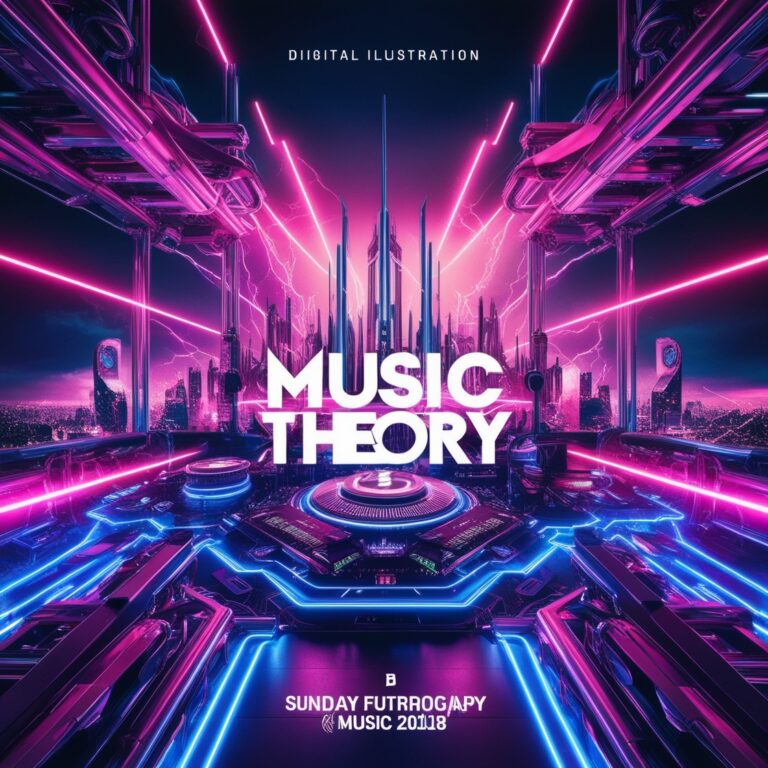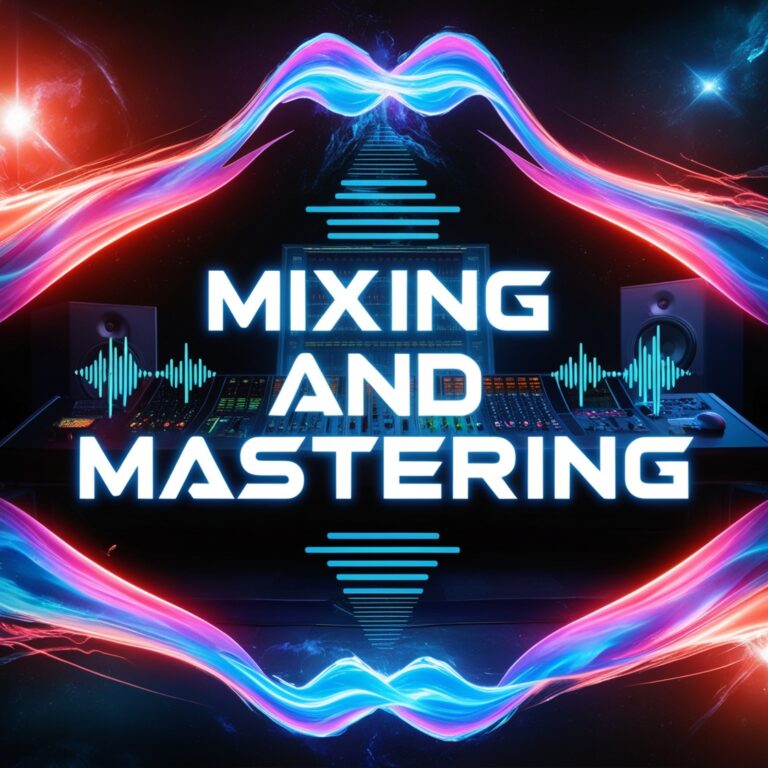
- Overview
- Basic Curriculum
- Advance Curriculum
Course Duration:
Basic: 2 Months
Advance: 3 Months
Fee:
Basic: ₹26,000
Advance: ₹48,000
Sessions:
Basic: 16 sessions
Advance: 18 sessions
Objectives:
- Master tools and techniques for producing psytrance, including sound design and intricate arrangement styles.
- Understand the dynamics of psytrance genres such as full-on, progressive, dark, and hitech.
- Explore hypnotic basslines, psychedelic textures, and atmospheric soundscapes.
- Equip students to create polished, dancefloor-ready psytrance tracks.
Module 1: Learning the Basics of Ableton Live (Sessions 1-5)
Objective: Understand the DAW, workflow, and essential tools for production.
- Overview of Ableton’s interface: Session vs. Arrangement View.
- Setting up your audio and MIDI preferences.
- Navigating browser, clips, and tracks.
- Basic shortcuts and workflow tips.
- Difference between MIDI and Audio tracks.
- Working with clips: launching, looping, and editing.
- Warping audio for precise timing in psytrance.
- Intro to Ableton’s stock instruments & sounds.
- Creating a MIDI track and programming basic drum patterns.
- Introduction to Drum Rack for psytrance percussion.
- Quantization, velocity, and groove adjustments.
- MIDI and audio recording inside Ableton.
- Using automation for effects, volume, and panning.
- Introduction to Ableton’s effect racks.
- Exploring reverb, delay, phaser, and filters.
- Introduction to Ableton’s audio effects for psychedelic sound processing.
- Freezing, flattening, and bouncing audio.
Module 2: Psytrance Essentials (Sessions 6-16)
Objective: Apply Ableton knowledge to Psytrance music production.
- Understanding psytrance BPM ranges (138-150+ BPM).
- Common song structures in psytrance.
- Intro to breakdowns, build-ups, and drops.
- Choosing and layering a psytrance kick drum.
- Introduction to rolling bass patterns in psytrance.
- MIDI programming vs. audio bass samples.
- Adding hi-hats, snares, and rides.
- Groove and swing concepts in psytrance.
- Humanizing percussive elements.
- Introduction to psytrance scales (Phrygian, Dorian).
- Using MIDI effects (Arpeggiator, Scale).
- Creating hypnotic acid-style leads.
- Using Ableton’s reverb and delay for trippy textures.
- Reverse FX, white noise sweeps, and risers.
- Experimenting with audio manipulation.
- Techniques for tension and release.
- Using automation for build-ups.
- Creating energy shifts with FX.
- Understanding groove templates.
- Adjusting swing for a human feel.
- Advanced MIDI groove editing.
- Introduction to vocal chops & chants.
- Creative sampling techniques in psytrance.
- Warping and reversing audio for psychedelic effects.
- Choosing the right reference tracks.
- Analyzing track structure, energy flow, and transitions.
- A/B testing and matching elements to professional tracks.
- Analyzing professional psytrance tracks.
- Identifying elements & production techniques.
- Developing an ear for arrangement and transitions.
- Students present their first psytrance loop/mini track.
- Group feedback and improvement tips.
- Next steps: Continuing learning and refining production skills.
Focus: Deep dive into advanced production techniques, sound design, arrangement, mixing, and mastering.
Module 1: Advanced Sound Design for Psytrance
- Master synthesis and design custom sounds using Serum, Vital, or other synths.
- Advanced Kick & Bass Synthesis: Designing a clean, punchy psytrance kick from scratch, advanced bass synthesis for rolling basslines, layering techniques, and fine-tuning transients.
- Advanced Psytrance Bass Processing: EQ, distortion, and multiband compression for bass, sidechain techniques without losing dynamics, and automation tricks for evolving bass patterns.
- Acid & FM Leads: Designing psytrance acid-style leads using FM synthesis, creating squelchy, metallic leads with filter modulation, and automating filter and resonance for movement.
- Pads & Atmospheres: Layering pads for depth and movement, using granular synthesis for unique textures, and soundscape creation with reverb & delay techniques.
- Psychedelic FX & Glitch Sounds: Creating trippy risers, sweeps, and glitches, using resampling & audio manipulation creatively, granular synthesis, and spectral processing.
- Vocal Processing & Sampling Techniques: Using ethnic chants, spoken words, and mantras, warping and processing vocals for psychedelic effects, vocoder & formant shifting for unique results.
Module 2: Advanced Arrangement & Storytelling
- Structure a track for maximum impact and storytelling.
- Full Track Breakdown & Analysis: Deconstructing a pro psytrance track, identifying key sections and transitions, and understanding energy flow in arrangement.
- Intro & Build-Up Techniques: Creating tension with evolving atmospheres, drum fills, FX, automation tricks, and subtle variations to maintain interest.
- Peak Sections & Drops: Maintaining energy in the drop, layering lead elements effectively, and handling variations in bass movement.
- Mid-Track Breakdowns & Transitions: The role of breakdowns in psytrance, building back energy with anticipation, and using reverb and automation creatively.
- Outro & Track Resolution: Creating a natural-sounding outro, filter automation & fading techniques, and preparing stems for mixing.
- Dynamic Track Flow & Arrangement Hacks: How to keep listener engagement, organic transitions & call-response techniques, and advanced automation & parameter modulation.
Module 3: Mixing & Mastering for Psytrance
- Achieve a clean, punchy, and professional mix.
- Mixing Low-End (Kick & Bass Focus): EQing bass for clarity & avoiding muddiness, compression techniques for tight low-end, and stereo vs. mono considerations.
- Percussion & Groove Mixing: Balancing percussions in the mix, parallel compression and transient shaping, and using reverb and delay without cluttering the mix.
- Lead & FX Processing: Advanced EQ, saturation, and reverb for leads, ducking techniques to fit leads in the mix, and delay feedback automation tricks.
- Spatial Mixing & Depth: Stereo widening without phase issues, reverb & delay automation for 3D sound design, and using mid/side EQing for a balanced mix.
- Advanced Mastering Techniques: Multiband compression and limiting for loudness, stereo imaging and harmonic enhancement, and finalizing a track for club or festival play.
- A/B Testing & Reference Mixing: Using reference tracks effectively, matching loudness and tonal balance, and common mistakes in psytrance mixing.
Module 4: Professional Production & Career Growth
- Taking music production to the professional level.
- Sound Design Tricks from Top Artists: Reverse-engineering popular psytrance sounds, understanding unique processing chains, and advanced layering and bus processing.
- Creative Workflow & Productivity Hacks: Speeding up production with templates & presets, avoiding creative blocks, and finishing tracks faster, customizing Ableton for a better workflow.
- Remixing & Collabs: How to approach a remix in psytrance, collaborating with other producers effectively, and file organization and project sharing tips.
- Label Submission & Self-Releasing Music: How to get signed to a psytrance label, preparing a demo submission (do’s and don’ts), and releasing independently vs. working with labels.
- Festival & Club-Ready Sound: What makes a track stand out for DJs, mixing for big sound systems, and preparing tracks for live performance.
- Final Project & Feedback: Students present a full track for review, peer feedback and discussion, and next steps for planning the production journey ahead.
Course Duration:
4 Month
Fee:
Domestic: ₹15,000/Month
International: ₹18,000/Month
Objectives:
- Master tools and techniques for producing psytrance, including sound design and intricate arrangement styles.
- Understand the dynamics of psytrance genres such as full-on, progressive, dark, and hitech.
- Explore hypnotic basslines, psychedelic textures, and atmospheric soundscapes.
- Equip students to create polished, dancefloor-ready psytrance tracks.
Curriculum:
Month 1: Mastering Ableton Live
- Explore Ableton Live’s interface with a focus on psytrance workflows.
- Setup for fast-paced MIDI programming and audio editing.
- Introduction to automation and modulation for psychedelic effects.
Month 2: Psytrance Music Theory and Composition
- Develop hypnotic basslines and driving grooves.
- Create psychedelic melodies, arpeggios, and call-response patterns.
- Understand tension/release, polyrhythms, and complex time signatures.
Month 3: Psytrance Sound Design
- Design fat basslines, evolving leads, and trippy atmospheres.
- Create risers, swooshes, and glitches unique to psytrance.
- Advanced synthesis using FM and granular techniques for psychedelic effects.
Month 4: Psytrance Arrangement
- Build and arrange full-on structures with intros, breaks, and climaxes.
- Work on transitions using stutters, fills, and complex automation.
- Layer dense textures and maintain clarity in busy arrangements.
Month 5: Mixing, Mastering, and Release Preparation
- Mix psytrance elements to achieve power and clarity.
- Use spatial effects like delays, reverbs, and panning for a three-dimensional sound.
- Prepare tracks for mastering, ensuring compatibility with psytrance festivals and labels.
- Insights into psytrance distribution platforms and industry connections.
TEACHING METHODS
- Lectures and Demonstrations: Live DAW walkthroughs tailored to genre-specific needs.
- Hands-On Practice: Practical exercises after each concept.
- Feedback Sessions: Regular critique on assignments and projects.
- Collaboration: Encourage peer-to-peer projects for genre exploration.
Q&A and Discussions:
Create an open, engaging environment for creative solutions
Explore Courses

Mastering DJing
Mastering DJing Enroll Now OverView Curriculum Course Duration:2 Month Fee:Domestic: ₹30,000/MonthInternational: ₹35,000/Month Objectives:Master the skills to perform live, from beatmatching to creating

Music Theory for Electronic Music Producers
Music Theory for Electronic Music Producers Enroll Now OverView Curriculum Course Duration:1 Month Fee:Domestic: ₹15,000/MonthInternational: ₹20,000/Month Objectives:Build a solid foundation with essential

Sound Design Mastery for Electronic Music Production
Sound Design Mastery for Electronic Music Production Enroll Now OverView Curriculum Course Duration:2 Month Fee:Domestic: ₹30,000/MonthInternational: ₹35,000/Month Objectives:Explore the art of crafting

Electronic Music Production Course
Electronic Music Production Course Enroll Now OverView Curriculum Course Duration:5 Month Fee:Domestic: ₹78000 Objectives:Introduce students to electronic music production tools and techniques.Develop

Psytrance Music Production Course
Psytrance Music Production Course Enroll Now Overview Basic Curriculum Advance Curriculum Course Duration:Basic: 2 MonthsAdvance: 3 MonthsFee:Basic: ₹26,000Advance: ₹48,000Sessions:Basic: 16

Techno Music Production Course
Techno Music Production Course Enroll Now OverView Curriculum Course Duration:5 Month Fee:Domestic: ₹78000 Objectives:Develop a deep understanding of minimalism and groove central





